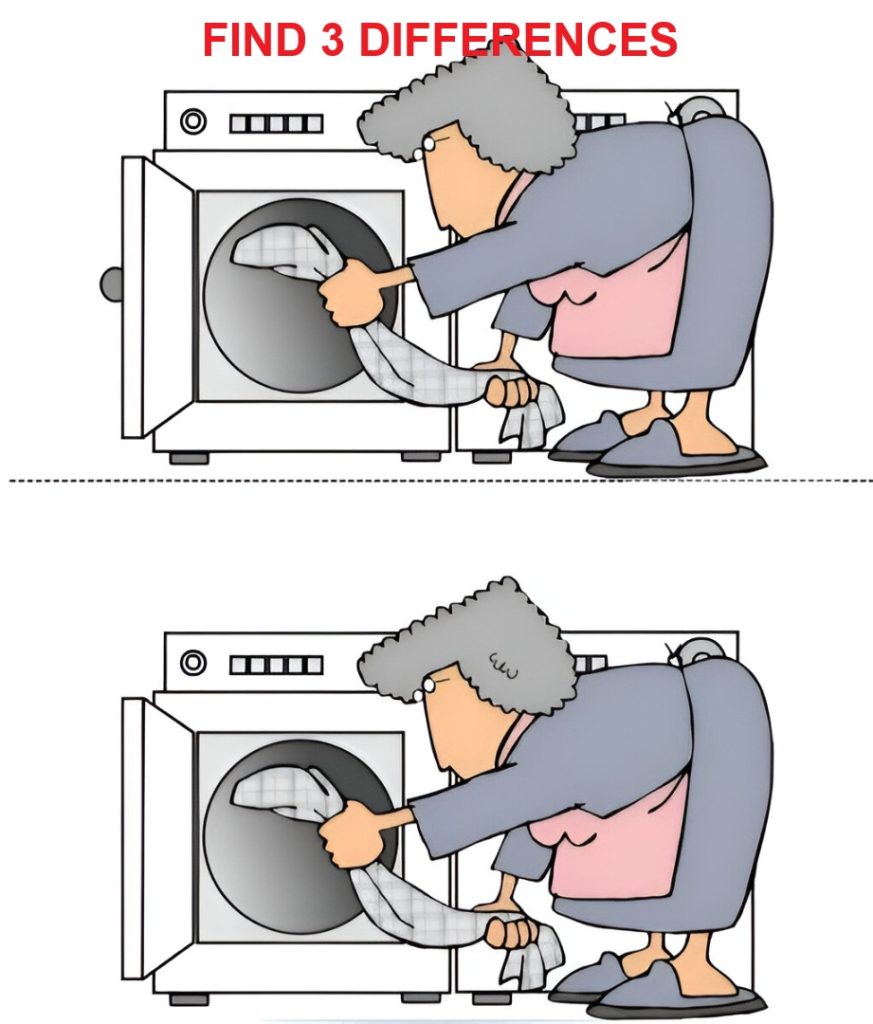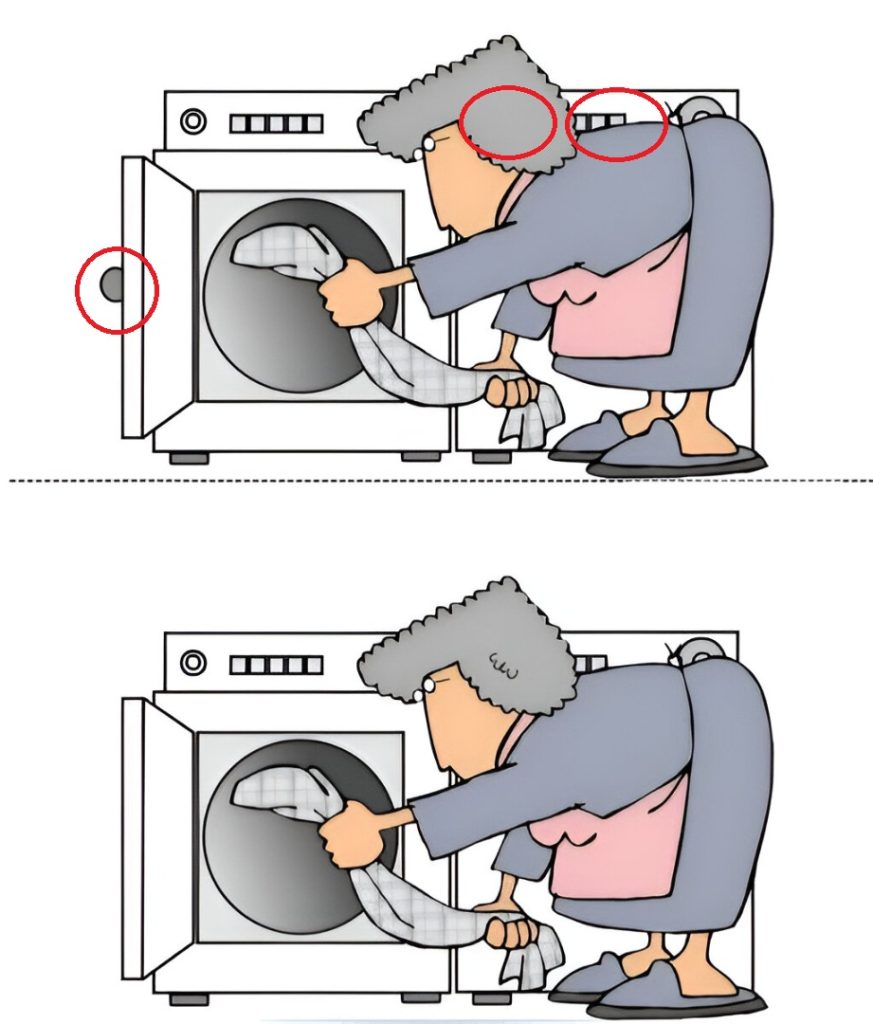Have you ever sat down with a puzzle and thought, “This one looks easy”, only to realize a few minutes later that it’s trickier than you imagined? That’s exactly the magic of spot-the-difference games. At first glance, the two images above of a grandmother loading laundry into a washing machine look completely identical. But if you look closer, you’ll notice that three clever details have been changed. Can you find all of them?

Take a moment before scrolling through the explanation—challenge yourself first. Ask yourself: Which tiny details stand out? Is it the machine? Her clothes? Maybe even something about her hair?
Why We Often Miss the Obvious
Spot-the-difference puzzles are fun, but they can also be frustrating. Why do we sometimes miss changes that are right in front of us? The answer lies in how our brains work. Most people focus on the bigger picture. When we see the image of a grandmother doing laundry, we automatically register the whole scene—the washing machine, her posture, her clothing. But our brains tend to filter out the smaller details, like buttons, handles, or subtle changes in hairstyle. That’s why these puzzles are so effective at tricking us.
Common mistakes include looking only at the central subject and ignoring the background, skimming too quickly instead of analyzing carefully, and assuming changes will always be obvious, like color swaps or missing objects. But in reality, the most challenging differences are often the tiniest ones.
Video : Find the Difference : Try to Find 3 Different Spots in 90 Seconds [Spot The Difference #356]
Step-by-Step Puzzle Breakdown
Let’s solve this puzzle together step by step. There are three key differences hidden between the two images. Here’s how to find them:
- The Hair
Look closely at the grandmother’s head. In the top image, you’ll notice a small section of her hair near the ear is shaped differently compared to the bottom one. It’s a subtle detail, but once you spot it, you can’t unsee it. Her hairstyle isn’t identical in both images, and that’s your first difference. - The Washing Machine Door Button
Now shift your attention to the washing machine. On the left side of the door in the top image, there’s a round button or knob. In the bottom image, it’s missing completely. This is a classic puzzle trick: removing a small piece of equipment that blends into the background. - The Washing Machine Handle
Finally, look at the door handle of the washing machine itself. In the top image, the handle looks different compared to the bottom one. It’s either altered in shape or missing entirely. Because our eyes are drawn to the grandmother and the laundry, this little detail is easy to overlook. But there it is—the third difference.
So, the three correct answers are:
- Hair
- Button on the washing machine door
- Door handle of the washing machine

Why This Puzzle Is Tricky
Did you notice how all three differences are small and located in areas our brains often ignore? None of the differences are in the obvious central focus, like the towel she’s holding or the color of her apron. Instead, they’re in the details that normally fade into the background. This is why spot-the-difference puzzles are so good for training your brain. They force you to slow down, focus on details, and sharpen your observation skills. It’s not just about “winning”—it’s about exercising your ability to pay attention.
Your Turn: Join the Conversation
Now it’s your chance! Did you find all three differences before reading the solution? Or did one of them completely trick you? Be honest—many people only find two out of three on their first try. Share your answers in the comments, and don’t forget to tell us how long it took you to solve the puzzle. Did you spot the hair first, or was the missing button your breakthrough?
Video : Spot the difference|Japanese Pictures Puzzle No752
Final Thoughts: Keep Training Your Brain
Spot-the-difference challenges like this aren’t just fun—they’re a great way to keep your brain sharp. By practicing puzzles like these, you train yourself to pay attention to details, improve your focus, and even boost your problem-solving skills. So the next time you see two “identical” pictures, don’t just glance and move on. Take a closer look. You might be surprised by how many hidden differences are waiting to be discovered.
Keep challenging yourself with more puzzles, and remember: every tiny detail matters. Who knows? Maybe the next puzzle will be even tougher. Are you ready for it?